The Human Factor in Industry 4.0: Capability-Led Change

A major global CPG company scaled digital transformation effectively across its manufacturing network by putting people at the center.

TAKEAWAYS:
● While change management holds the key to success in digital transformations, without buy-in from people—from the boardroom to the frontline—there won’t be any traction..
● Companies need to measure the impact of the transformation—it is critical to track KPIs to measure the success of a learning program just like they track the success of the overall transformation.
● Achieving scale in digital transformations requires thinking both globally and locally.
Expanding Industry 4.0 efforts across highly fragmented networks remains a genuine struggle. Without enthusiastic adoption by local teams, digital transformation risks losing momentum—leaving companies at risk of failing to realize a return on investment or unlock the efficiency gains promised by Industry 4.0.
As ever, change management holds the key to success—providing the “x-factor” that maximizes technology and business value. Some companies are reimagining change management by putting people at the center of their network transformation, building critical capabilities in-house, and creating “lighthouse” plants that serve as a beacon for the at-scale capabilities the organization needs to build.
This digital manufacturing approach comprises five core elements—strong cross-site communication through central governance and a diverse local team; adopting a value-back approach so efforts are made where they really count; implementing agile “waves” with the user at the center of the framework; designing an information technology/operations technology (IT/OT) stack in parallel to allow faster scale-up in other sites; and building capabilities in model sites and across the wider organization.
This article explores how a leading global CPG company harnessed capability building as part of its transformation effort (Figure 1). The company achieved a double-digit uplift in throughput across the digital transformation of approximately 20 business units in focus for this effort. Rarely can such results be sustained through a technology-focused approach alone.
Figure 1: The company used a structured approach to diagnose, design, launch, and deliver cohort-specific learning journeys across the network

Capability-led, from the Start
The company set the groundwork for a successful digital transformation program by establishing a digital manufacturing pilot in the largest site in its network and defining the digital operating model and IT/OT future state and rollout plan. It was ready to deliver in a digital world, but it needed its people to come on the journey.
To ensure success and to unlock the full potential of employees and tech in tandem, the company honed in on the skills, knowledge, and mindsets that aligned with how people create value for the business. Four elements made the difference: shared goals and priorities, tailored learning, agreed measures of success, and momentum post launch.
1. Organization goals and talent: Aligning priorities
From the outset, the company built its capability-building program around a clear picture of the organization’s transformation aspirations—and the talent needed to achieve them.
The program’s objectives reflected its people-led principles: creating awareness and excitement, which meant enabling everyone to envision the “art of the possible” and how their roles could be positively impacted through digital change; building digital, automation, and analytics skills by ensuring each person had the relevant technical skills to lead, design, build, implement, or adopt new tools; and transforming ways of working by establishing a broad understanding of new processes and digital tools and supporting greater collaboration with colleagues (Figure 2).
Figure 2: The company’s comprehensive academy curriculum achieved three primary objectives

2. A network of people: Tailoring the learning journey
To enhance the impact and scalability of its learning program, the company crafted learning journeys tailored to different needs. Instead of a one-size-fits all approach, the company defined cohorts across functions and grouped them by seniority level (Figure 3). It grouped each cohort according to the contribution they could make to the network’s digital transformation and the learning they would need to do it well.
Figure 3: Learning cohorts identified to group roles with similar digital and analytical learning needs

At the highest level, global leaders had a stake in the transformation journey and kept the program objectives in focus. They acted as champions of the overarching goal, providing clear communication that reinforced expectations and secured the resources needed to sustain the transformation journey. Advanced analytics teams learned the skills to build valuable digital and analytics solutions and the change teams brought forward the voice of the business to shape solutions and ensure their adoption.
Plant leaders and managers were role models for the new way of working and acted as influencers to sustain excitement and awareness. Associates made up the largest cohort, supporting the change and carrying it out in their on-the-ground activities.
“From the outset, the company built its capability-building program around a clear picture of the organization’s transformation aspirations—and the talent needed to achieve them.”
In practice, while global leaders focused on understanding the principles of digital and analytics, their primary learning goal was as transformation orchestrator and enabler. Meanwhile, analytics and change team members received more detailed training on specific tools and techniques, such as optimization using advanced analytics, including hands-on exercises and joining project teams to develop and implement use cases.
3. Measurement and key performance indicators (KPIs): Planning for success
The company understood that the learners’ voice matters from the start. Scaling was front of mind in the planning phase, and this included looking at how success would be measured. The company established KPIs to track the execution of the program by looking at participation and attendance. It tracked how smoothly the program was running by monitoring progress toward operational and financial targets.
At the same time, the company considered measures to mark the impact of the intervention, including measuring the participant experience and gathering feedback on the relevance of the learning.
4. The “steady state phase”: Maintaining momentum
The company tracked KPIs to hold teams accountable, with mechanisms to address challenges as they arose. Likewise, the company acted on post-session feedback from learners quickly using content tailored to meet cohort needs with each iteration.
Facilitators and production worked together to meet lesson delivery schedules and all participants were kept in the loop through reliable and clear communication of upcoming events. Local and regional champions helped to scale the program globally, acting as a critical link between the central transformation team and each site—tailoring content and supporting translations and local delivery.
Learning was then quickly converted into on-the-job training where employees could apply their knowledge in real scenarios with coaching through fieldwork.
How to Make the Shift
The quantifiable metrics achieved through the program are impressive: approximately 5,000 learners participated in the program, accumulating close to 100,000 hours of learning. Employees’ enthusiastic engagement reflected the quality of the program, which achieved a recommendation rate of more than 90 percent.
All of these efforts translated into real results on the factory floor, with a double-digit uplift in throughput across the sites in scope in the factory network. The program also delivered other benefits, including talent attraction and retention.
“Learning was then quickly converted into on-the-job training where employees could apply their knowledge in real scenarios with coaching through fieldwork.”
Other companies that are ready to unlock the potential of their whole network can also create a strong learning culture by adopting these actions:
- Establish leadership support through a steering committee, dedicated resources, and sponsorship who can “speak up” for program objectives.
- Take an agile approach to allow participants to provide feedback and contribute to the continuous refinement of the program.
- Track and measure by gathering feedback, tracking KPIs, and providing incentives that foster enthusiastic learning and offer opportunities to make meaningful improvements throughout the program.
- Think globally and locally—it’s important to strike a balance between the company’s global needs and its standard operating model and the local needs of learners.
- Communicate expectations clearly by having leaders reinforce the objectives globally with the help of local influencer leaders.
Achieving digital transformation at scale is not easy, but it is doable. This company successfully scaled its digital transformation program precisely because of its people, not in spite of them. M
About the author:

Mike Doheny is a senior partner in McKinsey’s Atlanta office, and co-leads our global Manufacturing and Supply Chain practice.

Roberto Migliorini is partner in McKinsey’s London office, and advises consumer clients on large-scale Industry 4.0 transformations.

Ewelina Gregolinska is an associate partner in McKinsey’s London office.

Justin Grover is an asset leader for McKinsey Academy in McKinsey’s Chicago office.
Technology as Manufacturing’s Skills and Applicant Solution

For some manufacturers on the journey toward M4.0, technology improves operational performance and enables innovative workforce solutions.

TAKEAWAYS:
● The US manufacturing industry has emerged from the COVID-19 pandemic on a strong growth trajectory.
● There could be as many as 3.8 million net new employees needed in manufacturing between 2024 and 2033, and around half of these jobs (1.9 million) could remain unfilled if the talent conundrum is not solved.
● Technology can be used to help attract, engage, and empower workers while enabling the flexibility that many seek.
In December 2023, Deloitte and The Manufacturing Institute embarked on their sixth manufacturing talent study in more than two decades. This article presents some of the important highlights from the resulting publication titled Taking charge: Manufacturers support growth with active workforce strategies (hereafter referred to as the “study”), including how some manufacturers seem to be leveraging technology to help with attracting and retaining talent.
Strong Growth in US Manufacturing, Even as Talent Challenges Persist
The US manufacturing industry is experiencing strong growth. Manufacturing employment has surpassed pre-pandemic levels and stands close to 13 million as of January 2024.1 Construction spending in manufacturing—that is, dollars invested to build new or expand existing manufacturing facilities—has nearly tripled since June 2020 when it reached a record high of $225 billion in January 2024 (Figure 1). The desire to de-risk supply chains and establish facilities closer to US customers has continued to drive investment from domestic and foreign manufacturers.2 Legislation and policy have played a role in spurring investment in new clean technology and semiconductor and electronics manufacturing facilities,3 as well as guiding future investment to support the development of a modern and innovative defense industrial ecosystem.4 These combined efforts seem to signal a positive outlook for the manufacturing sector, with potential implications for innovation, supply base expansion, job creation, and overall industry resilience in the US.
Figure 1: Total construction spending in manufacturing has grown significantly in recent years

Workforce Issues Remain a Leading Concern for Manufacturers
Alongside this potential growth, the study identified another trend: There is not just a skills gap, but notably a gap in applicants for open positions in manufacturing. More than 65 percent of respondents of the National Association of Manufacturers’ (NAM) outlook survey for the first quarter of 2024 indicated that attracting and retaining talent is the primary business challenge.5 With the exception of the pandemic, workforce challenges have also been the top concern for manufacturers surveyed by NAM since the fourth quarter of 2017.6
Even with some recent cooling, the labor market remains tight, and the resulting applicant gap may continue. This could impact manufacturers’ ability to fully capitalize on this recent growth in public and private investment. The net need for new employees in manufacturing could be around 3.8 million between 2024 and 2033. And, around half of these open jobs (1.9 million) could remain unfilled if manufacturers are not able to address the skills gap and the applicant gap7 (Figure 2).
Figure 2: An estimated 1.9 million open positions may prove difficult to fill by 2033

Evolving Skill Requirements Complicate the Search for Talent
Further complicating the picture is the evolving landscape of skill requirements and the rearchitecting of roles that is likely to be required as manufacturers continue their journey toward the smart factory and Industry 4.0. As operations become more complex and manufacturers look to integrate the information collected from their smart connected devices, equipment, and systems, highly skilled roles—that will likely require a combination of digital skills, soft skills, and high-level technical skills—could grow the fastest between 2022 and 2032.8
The study found a 75 percent increase in demand for simulation and simulation software skills, sought mostly for technology-enabled production or testing roles (Figure 3). Customer service and client support skills showed significant upticks in demand as well, and this trend is likely to continue as manufacturers increase digital interactions with customers and expand their aftermarket services.9 Manufacturing-specific skills, including those related to advanced processes like 3D printing, have also experienced gains. And the growth in demand for soft skills like critical thinking and problem-solving tend to underpin many of the other skills that have shown the greatest gains.
Figure 3: Between 2019 and 2023, a combination of digital skills, soft skills, and high-level technical skills show the fastest compound annual growth rates in manufacturing

Technology Can Help to Address Changing Workforce Expectations
As more baby boomers and Generation X workers approach retirement, the workforce may comprise more millennials and Generation Z workers, who can have a different set of expectations when it comes to work culture and the work environment. The study found that technology, including AI and automation, can be used to help attract, engage, and empower workers while enabling flexibility.
Providing the Flexibility that Workers Want
Nearly half (47 percent) of respondents in the study indicated that providing flexible work arrangements—for example, flexible shifts, shift swapping, split shifts—is the strategy that their company has found to be most impactful for retaining employees (Figure 4). Some manufacturers are partnering with innovative temp agencies to secure the workforce and skills they need while providing workers with the flexibility they desire. For example, leveraging digital tools and apps, some temp agencies enable part-time workers to sign up for work slots and overtime while providing the flexibility to cancel or swap shifts, and vacated spots are backfilled with another worker with the help of AI.10
“The desire to de-risk supply chains and establish facilities closer to US customers has continued to drive investment from domestic and foreign manufacturers.”
Taking a Bigger Role in Skills Development
The applicant gap seems to be prompting more employers to focus on training as a means to attract and retain employees (Figure 4). According to Deloitte’s Workforce Experience Research Study, employees who feel they can acquire necessary skills that are important for the future are 2.7 times less likely to leave their organization in the next 12 months.11 Many companies that participated in the study are leveraging e-learning platforms to facilitate flexible and self-paced learning opportunities. Some indicated that they are exploring the potential of augmented or virtual reality (AR or VR) for comprehensive training, and one executive added that VR has reduced training time for welders at the company by 50 to 60 percent. The flexibility in technology-facilitated trainings can enable individuals to upskill at their convenience, helping to foster a more dynamic and efficient learning environment.
Technology as a Magnet for Talent Attraction and Retention
The study gleaned that high-tech manufacturing environments seem to appeal to the workforce. For example, manufacturers that have built smart factories to enhance performance are also noting higher retention in these high-tech facilities.12 The study also found that technology can provide autonomy by giving operators new channels to report production issues, which can enable efficient triage and rapid problem resolution. In another recent report, over half of the surveyed workforce believe it is important for manufacturers to focus on the consistent availability of technology to attract more people.13
Figure 4: Most impactful strategies to attract and retain employees, according to survey respondents

The Road Ahead
Manufacturers are actively applying an innovative mindset to address talent challenges the industry faces, including using technology to help attract, engage and empower workers. With the industry poised for growth in the next decade, these approaches will likely continue to be necessary as manufacturers compete for the talent they need. M
About the authors:

John Coykendall is a vice chair, Deloitte LLP.

Victor Reyes is a managing director in Deloitte’s Human Capital practice.

Kate Hardin is executive director of Deloitte’s Research Center for Energy and Industrials.

John Morehouse is the research leader for industrial products manufacturing in the Deloitte Research Center for Energy & Industrials.

Gardner Carrick is the chief program officer for The Manufacturing Institute, the non-profit affiliate of the National Association of Manufacturers.
Footnotes:
1 Deloitte analysis of data from U.S. Bureau of Labor Statistics.
2 Reshoring Initiative, Reshoring Initiative 1H 2023 Report, 2023.
3 Deloitte analysis of data from: The White House, “President Joe Biden: Investing in America,” accessed March 21, 2024.
4 US Department of Defense, “DOD releases first-ever national defense industrial strategy,” press release, January 11, 2024.
5 National Association of Manufacturers, “2024 First Quarter Manufacturers’ Outlook Survey,” March 5, 2024.
6 2024 Deloitte and The Manufacturing Institute Talent Study.
7 Deloitte analysis of data from U.S. Bureau of Labor Statistics and estimates of private investments from Invest.gov.
8 Ibid.
9 2024 manufacturing industry outlook | Deloitte Insights
10 MyWorkChoice, “Bring Flexibility to Your Workforce,” accessed January 2024.
11 Deloitte Digital, Workforce Experience Research Study, 2023.
12 2024 Deloitte and The Manufacturing Institute Talent Study.
13 Deloitte Insights and The Manufacturing Institute, Competing for talent: Recasting perceptions of manufacturing, 2022.
A Multi-Dimensional Approach to Managing Change

Technology changes how work gets done, but leaders must also prepare and allow for a more empowered workforce.

TAKEAWAYS:
● Manufacturing 4.0 technologies such as connected devices, extended reality, and AI are ushering in a new era of manufacturing. These technologies represent a “deepening digitization” that is compatible with existing systems while empowering frontline workers.
● Connected devices enable information sharing between machines and directly to workers. At the same time, AI and XR help make large volumes of data accessible and actionable for workers on the factory floor.
● However, the biggest roadblock is often an organizational culture that is resistant to change. Starting small with enthusiastic teams and measurable pilot programs is recommended for smoothly integrating these technologies.
Many companies have mastered today’s industrial processes and may have even become overly complacent. However, emerging technologies including connected devices, extended reality, and artificial intelligence are once again creating a new era in the history of work – M4.0.
Despite making work safer and more efficient, these technologies face significant barriers to adoption. While these barriers include knowledge of technology and the cost to invest in hardware and software, the biggest barrier to adoption is reluctance to change. Effective change management is essential to the implementation of sustainable technological advances.
M4.0 as Deepening Digitalization
The last recent change in the manufacturing industry was the digitalization of many aspects of production. These changes brought benefits such as more accurate process optimization and more effective knowledge capture and transfer. It also made many processes more specialized.
The data that was captured couldn’t always be accessed, understood, or used by the frontline worker. For many workers, this meant more instructions from the top — a relationship that many managers are only too happy to maintain.
 “M4.0 is both compatible with existing management and optimization systems and more empowering to the average worker.”
“M4.0 is both compatible with existing management and optimization systems and more empowering to the average worker.”
At first glance, M4.0 looks like more of the same since it is driven by even more complex and nuanced and less familiar emerging technologies. The nature of M4.0 is, in many ways, a “deepening digitalization” of work. That means that it is both compatible with existing management and optimization systems and more empowering to the average worker.
Connecting the Worker
Existing digitalization trends have created more information, but too often that information has been siloed both from other sources of information and from the worker who created it first and needs it most.
A key component of M4.0 is connected devices that share information with each other. On a factory floor where many machines perform different tasks to make a single product, connected devices enable more efficient process optimization because all the information from all the devices is presented in a single context. Moreover, when devices are directly connected, some of these elements can be automated in networks of machines that work more like colleagues than tools.
But M4.0 isn’t just about connecting devices – it’s about connecting the worker. Connected devices mean more information from more places with more possibilities than ever. Without some of the other key technologies of M4.0, it would only perpetuate many of the problems inherent in the existing digitalization of work.
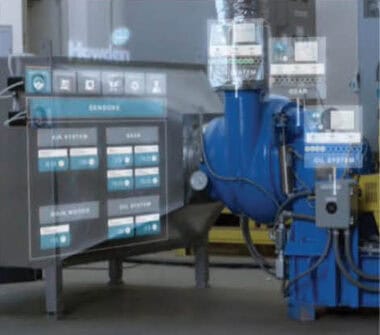
“Even with AI, the volume of information made available to frontline workers from connected devices could be overwhelming.”
People often talk about AI replacing frontline workers, but this is a misconception. While robots are increasingly becoming a part of factory floors, they are most often used by human workers (rather than instead of human workers) to perform difficult and dangerous tasks. However, some analysts may find AI taking over as it interprets and presents information from connected devices directly to workers on the factory floor.
Here, another emerging technology comes into play. Even with the help of AI, the volume of information made available to frontline workers from connected devices could be overwhelming. Augmented reality and IoT technology can turn large volumes of information and real-time data into easy-to-understand visual formats, available on mobile devices and wearables.
The Benefits of Connected Work
To bring it all together, what are the benefits of connected work? There are two important ways to answer this question: at the worker level and at the company level.
At the worker level, faster access to more accessible information leads to greater efficiency and greater job satisfaction. Being able to get the information that they need when and where they need it in a way that enhances rather than erodes their situational awareness means that workers can do a better job at a faster pace with fewer incidents. Meanwhile, being able to get that information on their own rather than relying on management, subject matter experts or co-workers to provide it to them means that workers can act and rightly feel more independent. This isn’t just a tool for communicating procedure directly from management to the floor. It can also help automate knowledge transfer to newer hires without putting undue pressure on more experienced workers.
At the company level, connected work means that work is done more safely with faster throughput and fewer mistakes. This doesn’t just mean faster production; it means more reliable production. That more than pays for itself in terms of improved customer satisfaction, but it also means reduced cost from rework. Products are more likely to be made right the first time, while defects are more likely to be located and addressed before shipping.
The Role of Change Management
So, where does change management come in? The greatest barrier to adopting M4.0 technologies isn’t cost, availability, or awareness. According to a recent survey by the Manufacturing Leadership Council, “the most significant roadblock to implementing a smart factory strategy is an organizational structure or culture that resists change.”
Technologists are quick to talk about what a major shift these emerging technologies pose for industry and quick to tout the benefits. However, they seldom mention that implementing major changes can be challenging. It is the job of change management to play both parts – mitigating the challenges to M4.0 adoption to realize the most benefits with the least disruption. But how?
One approach is to help everyone to understand that these technologies benefit everyone, both individually and as a company. Manage concerns on the part of the engineers from stories about workers being “replaced” and manage expectations from supervisors who might think that this technology can be effectively implemented overnight for high returns the next day.

“It is the job of change management to mitigate the challenges to M4.0 adoption to realize the most benefits with the least disruption.”
One practical and actionable approach is to find your champion and start small. While you continue to research technologies and the companies that provide them, keep your eyes open for the departments, teams, and team leaders that will be the most enthusiastic about emerging technologies. Most success stories of M4.0 implementation come not necessarily from presidents and executives with an eye toward the future, but from middle managers with the foresight to put together a pilot program.
Identifying a single process or product to test these technologies with the support of open-minded workers will be an easier battle than trying to automate an entire campus all at once. Focusing a more manageable budget to address more measurable variables will make for a great use case both in terms of how much these technologies have to offer your company, and in terms of the best way to gracefully integrate these technologies into your company’s unique structure and culture.
Making Change
Implementing these emerging technologies can feel like an uphill battle at first. But, in many workplaces, the workers who resist the idea are the ones that have the most to benefit from it. To effectively and sustainably implement M4.0 technologies, let them speak for themselves through hands-on pilot programs. M
About the author:

Dirk Schart is Senior Director Go-to-Market at PTC.
Embracing OT Cybersecurity as a Transformative Culture Shift

Building a resilient OT-IT integrated future requires vision and a proactive approach to cybersecurity.

TAKEAWAYS:
● Leaders need an outcome-focused cybersecurity vision that sets clear, strategic goals for what they want to achieve in terms of security and ensures that decisions and actions align with these outcomes.
● Take immediate action by integrating the SANS Five Critical Controls for Industrial Control Systems (ICS), the first lie of cybersecurity defense, offering a structured approach to incident response, network architecture, visibility, secure access, and vulnerability management.
● Stay one step ahead by proactively addressing the common attack vectors that target OT environments to enhance organizational resilience against cyberattacks and safeguard critical operations.
In modern manufacturing, the integration of Operational Technology (OT) with traditional IT systems has given rise to a new set of challenges. OT, which encompasses the hardware and software that monitors and controls physical devices, is the backbone of manufacturing operations. Yet, it is often the case that these systems were not designed with cybersecurity in mind, thereby creating an environment ripe for exploitation.
As manufacturers rely more on automated processes and connected devices, the line between IT and OT blurs, making it crucial to protect the entire ecosystem. Unlike traditional IT security, which focuses on safeguarding data, OT cybersecurity is about maintaining system integrity and ensuring the continuous, safe operation of production lines.
Recognizing the unique requirements of OT environments is the first step in securing them. These systems demand a specialized, OT-specific approach to cybersecurity. The approach must:
- understand the systems
- analyze and log the commands for threat behaviors or to spot misconfigurations
- consider the need for minimal disruption
- prioritize workforce and equipment safety
Understanding the Operational Risks in Manufacturing
The operational risks facing the manufacturing sector are multifaceted. The ramifications of a breach in an OT system can be far more severe than that of an IT system, often resulting in physical damage to equipment, downtime in production, loss of revenue, and even risks to human lives. As remote access into OT increases, risk to the environment increases with it.
Moreover, cybercriminals are constantly devising new methods to exploit vulnerabilities in OT systems. These adversaries range from money-motivated ransomware gangs to sophisticated criminal organizations and state-sponsored actors, all with the capability to disrupt manufacturing operations on a massive scale. The truly alarming aspect lies in the potential for advanced tools, developed by sophisticated nation states, to fall into the hands of less sophisticated adversaries. These adversaries, driven by financial motives, are willing to target any type of organization.
According to the recently released Dragos OT Cybersecurity Year in Review, ransomware attacks escalated by nearly 50% in 2023, with the manufacturing sector being the primary target.
The operational risks also extend to the supply chain, where a single vulnerability can have cascading effects across multiple manufacturers. Key software components can be a part of hundreds of different systems, impacting hundreds of thousands of devices, like PIPEDREAM – an industrial control systems (ICS)-specific malware toolkit. The interconnectivity of suppliers, vendors, and partners means that securing the manufacturing process is no longer just about protecting one’s own operations but ensuring the integrity of the entire value chain.
According to the recently released Dragos OT Cybersecurity Year in Review, ransomware attacks escalated by nearly 50% in 2023, with the manufacturing sector being the primary target. High-profile ransomware attacks on major companies like Dole, Boeing, and Clorox resulted in the shutdown of facilities and substantial financial losses. Lockbit ransomware alone accounted for 25% of all industrial ransomware attacks, with ALPHV and BlackBasta each contributing 9% of the total.
A pivotal insight from the report: approximately 70% of OT-related cyber incidents originated from the IT environment, indicating the need for robust network segmentation and separate domains for IT and OT systems.
The Need for a Cultural Shift in OT Cybersecurity
The crux of the challenge lies not just in the technology, but in the mindsets of teams operating and managing OT systems. For decades, the primary focus of manufacturing has been on efficiency and productivity, with cybersecurity often taking a backseat. This must change. Industry must foster a culture where cybersecurity is as fundamental as safety and quality.
Embracing OT cybersecurity requires a cultural shift within the organization, where everyone from the shop floor to the boardroom understands the significance of cybersecurity and their role in upholding it. This shift entails a move away from reactive measures toward a proactive approach that can also be used to increase operational equipment efficiency (OEE) and resilience.
Adopting an outcome-focused mindset ensures that the organization remains resilient against emerging threats, with a clear focus on achieving desired security outcomes.
A robust OT cybersecurity program encompasses the entire manufacturing process, with a focus on protecting the most vital assets. Although comprehensive frameworks like NIST and ISA/IEC 62443 exist to guide the development of a thorough plan, their complexity can sometimes hinder prompt action. Our recommendation is to start with the implementation of the SANS Five Critical Controls for ICS, which include:
- OT-Specific Incident Response Plan
- Defensible Architecture
- ICS Network Visibility & Monitoring
- Secure Remote Access
- Risk-Based Vulnerability Management
Begin by putting these controls into practice, ensuring they are fully operational and can efficiently handle key scenarios. As the program evolves, establish a risk management framework. This will allow the program leader to fine-tune investments and enhance risk mitigation efforts.
The Impact of Cyber Controls on Operational Efficiency
It is crucial to recognize that implementing the right cyber controls can lead to substantial improvements in operational efficiency and uptime. In production environments, the questions of “What happened and why?” are frequently posed. While some answers may be straightforward, identifying the root cause of emergent problems often proves challenging. Controls that enable the identification of new devices, monitor third-party remote access, and log OT system commands offer a valuable data set. This data can be analyzed to understand events leading up to and following issues, enhancing OT network visibility and monitoring.
Preventing Production Shutdowns and Managing Risks
The questions arise: Can we prevent a shutdown of production, or if necessary, how can we execute an orderly shutdown? Implementing risk-based vulnerability management offers alternatives to IT-driven device patches that could halt production lines. In the event of an incident, a robust OT-specific incident response plan, which considers critical processes and safety systems, is essential.
Safeguarding Critical Processes and Assets
Protecting critical processes and assets from IoT devices, transient network traffic, or third-party remote access is paramount. This involves creating defensible architectures that segment equipment types and networks. Such strategies lead to more resilient operating environments and minimize disruptions.
Maintaining Vigilance in Manufacturing Environments
Staying vigilant and continuously searching for potential problems within manufacturing settings is essential for maintaining operational integrity and safety. This proactive approach helps in early detection and resolution of issues, ensuring the smooth functioning of operations.
Cultivating cyber hygiene and awareness not only strengthens security but also enhances the overall efficiency and reliability of manufacturing operations.
The Role of Leadership in Driving Outcome-Focused Cybersecurity
Leadership plays a pivotal role in driving change and instilling a culture that takes cybersecurity seriously. It’s imperative for leaders to lead by example, demonstrating the importance of cybersecurity through clear communication, investing in effective tools and training, and advocating for continuous improvement. These elements are crucial in fostering a culture that prioritizes OT cybersecurity.
Creating an OT cybersecurity plan is a strategic process that involves multiple stakeholders and detailed planning. The plan should clearly outline the goals, responsibilities, and procedures that will guide the organization’s cybersecurity efforts. A few best practices include:
- Set clear objectives. What are the most critical assets that need protection? What are the potential threats? What compliance requirements must be met? Answering these questions will help to establish a framework for the cybersecurity strategy.
- Build in flexibility to adapt quickly. As manufacturing operations evolve and new threats emerge, the plan must be flexible enough to accommodate these changes and allow for adjustments that fortify security measures over time. Adopting an outcome-focused mindset rather than a tactic-centric approach ensures that the organization remains resilient against emerging threats, with a clear focus on achieving desired security outcomes.
- Engage all stakeholders. By incorporating diverse perspectives and expertise, manufacturers can enrich the cybersecurity plan and foster a culture of shared responsibility and vigilance.
A practical first step in this journey is organizing a tabletop exercise (TTX) focused on a ransomware threat scenario. This simulation will uncover vulnerabilities, paving the way for prioritizing efforts and allocating resources effectively. Moreover, a meticulously planned TTX reveals weaknesses in incident response protocols, ensuring that in the face of a cyberattack, swift and coordinated efforts can significantly reduce damage and expedite recovery. It is essential to regularly test and update these protocols to align with real-world challenges and ensure readiness across all stakeholders.
Transitioning to the implementation phase involves deploying OT-specific cybersecurity solutions, configuring systems for enhanced protection, and integrating new technologies and processes seamlessly into the existing operational technology environment. Special attention should be given to addressing common vulnerabilities and attack vectors identified within the manufacturing sector, such as:
- Security Perimeters: 63% of manufacturers report inadequate OT security perimeters.
- Incident Response: 52% lack tailored incident response plans for their industrial control systems (ICS).
- Network Visibility: A staggering 85% of manufacturers admit to insufficient OT network visibility.
- Strengthening these areas is critical for establishing a resilient security posture capable of defending against and swiftly responding to cyber threats.
Conclusion and Next Steps
Strengthening OT cybersecurity is more than a technology initiative; it is a critical business strategy. Acknowledging operational vulnerabilities, embracing the need for culture transformation, and deploying robust cybersecurity measures are essential for safeguarding operations, fostering innovation, and securing a competitive advantage. Initiating this journey with a focus on desired outcomes, leveraging specialized monitoring technologies, and forming alliances with OT security professionals attuned to manufacturing intricacies will equip businesses to effectively confront future challenges. M
About the author:

Jennifer Halsey is Director of Integrated Product Marketing for Dragos, Inc.
Welcome New Members of the MLC June 2024
Introducing the latest new members to the Manufacturing Leadership Council


Mike Coubrough
Vice President, Operations
TE Connectivity
www.te.com/en/home.html
![]()
https://www.linkedin.com/in/mikecoubrough/

Jim Derry
CEO
Field Fastener
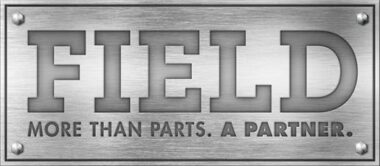
https://www.fieldfastener.com/
![]()
https://www.linkedin.com/in/jimderry/

Jim Tobojka
Senior Vice President, Operations
TE Connectivity
https://www.te.com/en/home.html
![]()
https://www.linkedin.com/in/jim-tobojka-ba38332/

Michal Wierzchowski
Vice President, Operations
Jabil
![]()
https://www.jabil.com/
![]()
https://www.linkedin.com/in/michal-wierzchowski-7203324/
M4.0 Technology as a Catalyst for Enduring Change

Emerging technologies are creating new opportunities for manufacturers – including a greater role for women in operations.

TAKEAWAYS:
● It is now essential to balance cost and process optimization with improvements in safety, resilience, and quality.
● Women are increasingly becoming a vital part of the manufacturing workforce, and their unique perspectives are essential in guiding digital transformation strategies.
● The focus on safety, resilience, and quality in digitalization efforts aligns with creating a more inclusive and appealing work environment.
In manufacturing, emerging tech is fast becoming mainstream. From digital twins and data analytics to cloud computing and generative AI, more and more companies are using digital solutions to transform their operations, supply chain and customer experiences. Emerging tech has moved from the edge to the mainstream, and it’s reshaping the industry’s future.
It’s affecting everyone too. Domestic or international, established or startup – manufacturers of all shapes, sizes and locations are seeing their business model upended by this rapid shift in the digital landscape. Yet, broad discrepancies remain in exactly where firms are on that journey.
For example, while many manufacturing companies continue to wrestle with shopfloor connectivity and data gathering, others are well down the road of leveraging insights and AI to automate and improve decision-making. For some, the cloud and Internet of Things have been the limit of their digital ambitions so far; yet, elsewhere, robotics and nanotechnology are already taking hold.
In certain cases, there are even disparities in the technological sophistication of different plants within the same organization.
A Dualistic Approach
What’s crucial, therefore, is that leaders take time to clearly and honestly understand how far along the digital transformation path they are. Why? Because this will enable them to identify issues, pinpoint what and where to improve, and figure out how to keep pace with technology’s fast expanding capabilities.
For Hiral Rao, who leads the EY Digital Manufacturing and Mobility Cloud platform, the best way to do so is with a “dualistic approach.”
First and foremost, this means focusing on short-term challenges, such as boosting the connectivity of data models to create a single, reliable source of truth across the organization and building less siloed relationships with technology providers.
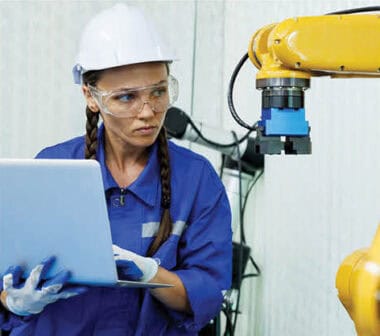
Understanding their place on the digital journey will enable leaders to identify issues, pinpoint where to improve, and keep pace with technology’s fast expanding capabilities.
But, at the same time, it means having one eye on the future – what the long-term impact of Industry 4.0 on the organization will be. How will it change their risk management, for example? Where are they going with automation? How will technologies like AI and machine learning fit in? And what skills do they need to train and recruit their workforce?
As Rao says, “A dualistic strategy responds to the core operational challenges of today while also preparing manufacturers to answer the key strategic questions of tomorrow.”
Evolving to Lean 4.0
Equally important is firms’ willingness to evolve past the lean operating principles that have traditionally defined the industry. Efficiency and effectiveness will still be foundational to competitiveness, but this is no longer about achieving only highly repeatable processes, lowest cost and least time.
Instead, firms must balance cost and process optimization with the need to improve safety, resilience and quality. This requires investment in better data integration to feed developing technology and sharpen decision-making, as well as deep knowledge of the people and processes across different production facilities. Where these vary, leaders who are seeking to scale at an enterprise level must look beyond centrally controlled pilot programs and rollouts, favoring a more nuanced testing and implementation approach across individual plants.
This all intermingles with Rao’s dualistic approach too. By recognizing and understanding where they’re currently delivering on their digital journey, along with where they’re not, firms can move quicker to embed technologies that fill current performance and productivity gaps and deliver value in the future. Specifically, it means:
- Maximizing what they already have, ensuring that they have the right culture, processes and skills to fully harness their existing technologies.
- Experimenting and adapting to move forward, testing novel solutions firmwide and plant by plant to unlock efficiencies, boost resilience and improve customer experiences.
- Collaborating to scale, partnering with stakeholders across the organization itself and, where appropriate, within its broader ecosystem to scale solutions for enterprise impact.
A Woman’s World?
There is another notable intersection here too. While manufacturing remains male-dominated, there is quantifiable progress in attracting female workers to the industry. Right now, 30% of manufacturing jobs are currently filled by women. It’s important for this to be improved to keep pace with other industries. After all, 47% of the overall U.S. workforce is female.
Emerging tech can play a key role in doing so, attracting a new generation of women into manufacturing. Rather than project the physical, labor-intensive image of the past, firms can now offer female workers a vision of creativity, collaboration, and innovation, all rooted in a digitally enabled future, encompassing everything from the smarter use of data to the responsible deployment of AI.

Efficiency and effectiveness will still be foundational to competitiveness, but it’s no longer about achieving only highly repeatable processes, lowest cost and least time.
In other words, manufacturing stands on the brink of not one, but two, revolutions at the same time. As the industry’s digitalization accelerates, the profile of the workforce will rapidly recalibrate too. Fresh skills and perspectives will join advanced technologies in creating smarter factories; more actionable insights on products, quality and risks; more accurate forecasting; and more resilient supply chains.
Ultimately, these twin forces could mean that manufacturers find themselves better prepared to sense and respond to all dynamics of an ever-shifting market. After a decade of challenges, a new and exciting future is emerging. M
About the author:

Lisa Caldwell is EY Americas Business Consulting Leader.
The views reflected in this article are the views of the author and do not necessarily represent the views of Ernst & Young LLP or other members of the global EY organization.
A Pioneer in Automation Becomes a Champion for Digital Transformation
Rockwell Automation’s history points to a pioneering drive to make machines smarter. From its 1903 founding as the Compression Rheostat Company, soon to be renamed the Allen-Bradley Company, the company started with an early prototype machine controller and 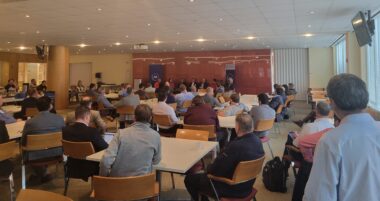 is now a world leader in digital transformation – both for its own operations and in offering guidance for its customers. Today, Rockwell is a $9 billion company with nearly 29,000 employees serving customers in 100 countries.
is now a world leader in digital transformation – both for its own operations and in offering guidance for its customers. Today, Rockwell is a $9 billion company with nearly 29,000 employees serving customers in 100 countries.
In early April, a group of Manufacturing Leadership Council members toured Rockwell’s electronic assembly plant in Twinsburg, Ohio, just outside of Cleveland. The theme of the tour was “Build a Digital Transformation Culture with MES and IoT Technology.” The 250,000-square-foot Twinsburg plant is one of four main electronic assembly locations within Rockwell that provide printed circuit board assemblies that go into the company’s products, with Twinsburg’s eight surface mount technology lines placing three million components and forming 11 million solder joints to make 3,000 control panels each day.
Rockwell’s manufacturing operations is regarded by many as a role model for system integration and data analytics. The company monitors and integrates its engineering data, material management data, product error proofing and genealogy, machine data, quality data, waste data, and performance data. Data is delivered to where it is most relevant and impactful, from facility performance to team leaders down to the specific work order and line performance for operators.
The company utilizes its FactoryTalk production system, industrial automation software that was developed to streamline processes while improving precision and reducing errors. It creates an interactive platform that can integrate data visualization, data collection and analysis, process design, and system diagnostics. Rockwell offers a full suite of FactoryTalk products, including for analytics and data management, product and process design, human-machine interface, industrial communications, maintenance, performance monitoring, and more.
Additionally, Rockwell utilizes a closed loop operating system that combines scheduling and constraint management, and automatically enforces finite capacity based on, for example, the number of operators available at the plant on a given day. Company leaders say this system has helped to eliminate some of its functional siloes, as its development was collaborative and cross-functional, with many different teams giving input to create a tool that could benefit all. While FactoryTalk is already available for manufacturers to license at their own facilities, Rockwell has an eye toward commercializing its closed loop operating system as well.
The tour didn’t shy away from showing both Rockwell’s tried-and-true technologies in addition to its newer ones, including a robot for final testing and assembly that utilizes a digital twin and AR to train operators and maintenance technicians. The machine is being used to create robot standards that can be scaled elsewhere throughout its other manufacturing facilities. At the time of the tour, it had been on the factory floor for less than eight weeks.
When Rockwell’s operations leaders were asked the top reasons for starting their digital transformation journey, they mentioned a need to address a huge uptick in demand, high turnover in the workforce that has led to far less tribal knowledge among frontline operators, and a desire to improve constraint management – both identifying and resolving those constraints. Looking toward the future, the company wants to capitalize on the momentum it has established on its digital transformation journey, explore the opportunities presented by AI and generative AI, and operate on the basis of real-time data-driven decisions.
Rockwell’s leaders also pointed to culture as key to getting functions and teams to work together while moving forward on technology transformation. When it comes to dealing with the complexity created by working with multiple layers of software, they think of it the same way as they do when developing their own products – take things that are sophisticated and make them easy to use by designing them for an operational environment.
Never one to shy from innovation, Rockwell is looking to an exciting future of possibilities ranging from developing large language learning models for manufacturing to building industrial ecosystems to creating a comprehensive data loop that moves between customers, engineering, and manufacturing. It seems fitting for a company that has placed itself as a cutting-edge leader from the radio age to the space age to the data age.
Read a full interview with Rockwell CEO Blake Moret here.
2024 Manufacturing Leadership Award Finalists Recognized for Achievements in Smart Factories, Sustainability, AI and More
June 5 gala will recognize companies and individuals that are leading digital manufacturing transformation
Washington, D.C. – The Manufacturing Leadership Council, the digital transformation division of the National Association of Manufacturers, today revealed the list of world-class manufacturing companies and individual leaders recognized as finalists for the 2024 Manufacturing Leadership Awards, the 20th season of the industry’s premier awards program for achievements in digital manufacturing.
“More than ever, manufacturers are finding that digital technology investment is good for business as they achieve new levels of performance in efficiency, productivity and innovation,” said MLC Founder, Vice President and Executive Director David R. Brousell. “The finalists that we are recognizing for this year’s awards have demonstrated not just the business benefit of Manufacturing 4.0 technology, but also a fresh and imaginative approach to applying it in a transformative way.”
The 2024 awards feature nine project categories to recognize company achievements in the areas of Artificial Intelligence and Machine Learning; Collaborative Ecosystems; Digital Network Connectivity; Digital Supply Chains; Engineering and Production Technology; Enterprise Integration and Technology; Operational Excellence; Sustainability and the Circular Economy; and Transformational Business Cultures. Additionally, individual leaders are recognized in the Digital Transformation Leadership and Next-Generation Leadership categories. Award nominations were judged by a distinguished group of manufacturing leaders from across the industry.
“Each year, we see entries from manufacturers of all sizes, from a wide mix of industries and from locations around the world all telling different versions of the same story: digital is transformational,” said MLC Senior Content Director Penelope Brown, who is head of the awards program. “The quality and sophistication of this year’s award entries were outstanding. Many projects demonstrate how M4.0 investments are positioned for significant business model improvements. Additionally, the individuals recognized in the Digital Transformation Leadership and Next-Generation Leadership categories are exemplary leaders now and for the future.”
Select award winners will present their projects at the MLC’s Rethink Summit, which will take place at the JW Marriott Marco Island Beach Resort in Florida June 2–5. Rethink, also now in its 20th year, is the industry’s leading event for exploring manufacturing’s digital era. Details are available here.
“This year’s program will examine the past, present and future of digital manufacturing, and we are proud that the MLC has had an important role in building a community of leaders and organizations that are leading the charge,” Brousell said. “Whether this is your first time at Rethink or your 15th, you will always come away with new connections, new aspirations and new ideas that you can implement right away.”
All finalists will be recognized onstage at the Manufacturing Leadership Awards Gala, following the Rethink Summit, on Wednesday, June 5, at 7:00 p.m. EDT. Also to be announced at the gala will be category winners for all project and individual categories, winners of the Manufacturing in 2030 Award, the Manufacturing Leader of the Year, the Small/Medium Enterprise Manufacturer of the Year and the Large Enterprise Manufacturer of the Year. See a complete list of finalists here.
Nominations for the 2025 Manufacturing Leadership Awards will open in September.
-MLC-
Founded in 2008 and now a division of the National Association of Manufacturers, the Manufacturing Leadership Council’s mission is to help manufacturing companies transition to the digital model of manufacturing by focusing on the technological, organizational and leadership dimensions of change. With more than 2,500 senior-level members from many of the world’s leading manufacturing companies, the MLC focuses on the intersection of advanced digital technologies and the business, identifying growth and improvement opportunities in the operation, organization and leadership of manufacturing enterprises as they pursue their journeys to Manufacturing 4.0.
MLC Announces Manufacturing Leadership Award Finalists
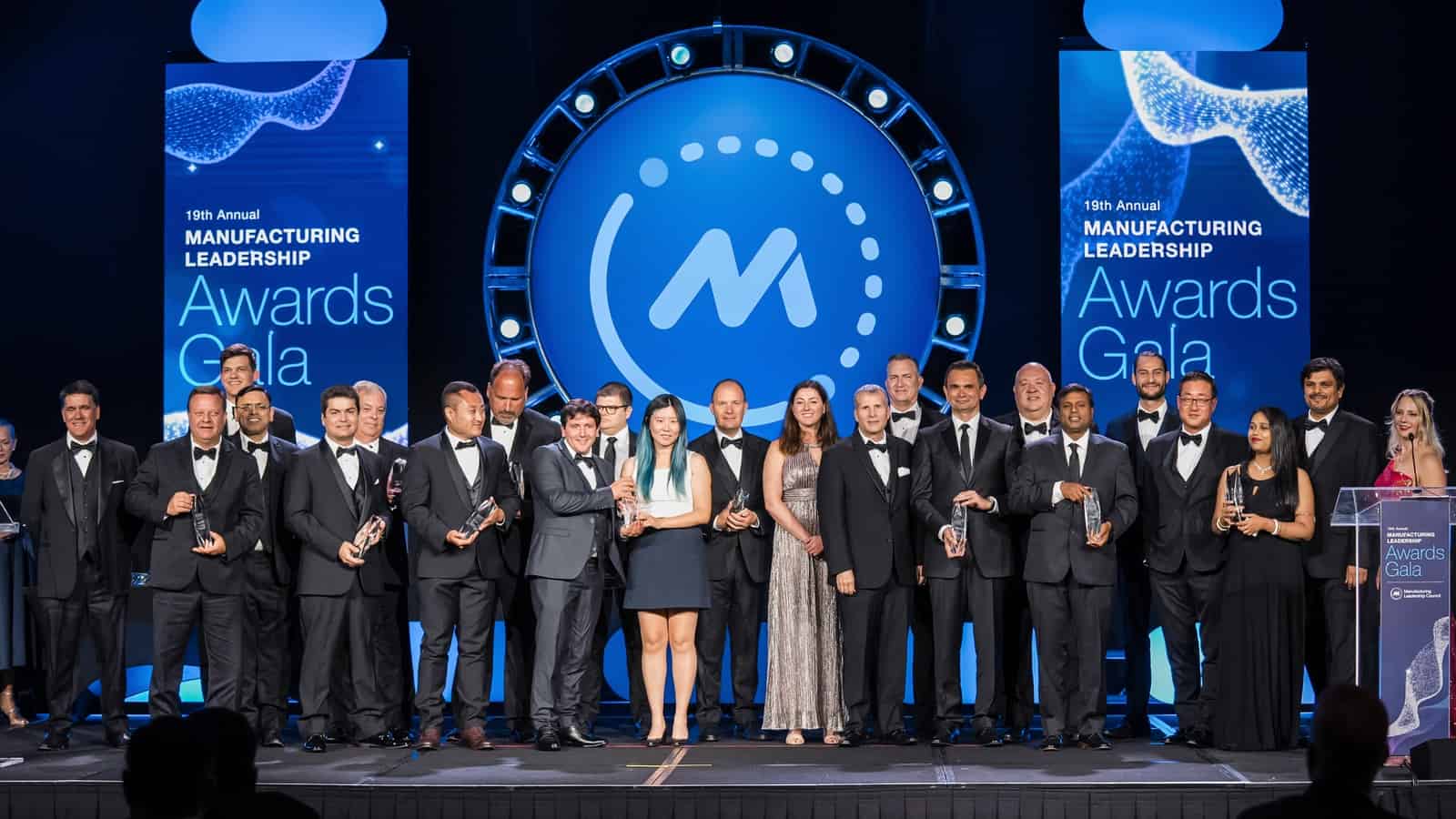
The Manufacturing Leadership Council, the NAM’s digital transformation division, has announced the 2024 Manufacturing Leadership Awards finalists.
About the awards: Now in their 20th season, the Manufacturing Leadership Awards honor the most outstanding manufacturing companies and their leaders for groundbreaking use of advanced manufacturing technology.
- This year’s program features nine project categories, including Artificial Intelligence and Machine Learning, Digital Supply Chains and Sustainability and the Circular Economy.
- It also includes two categories for individuals: Digital Transformation Leadership for executive-level manufacturing leaders and Next-Generation Leadership for up-and-coming leaders age 30 and under.
How we decide: Nominations are judged by an outside panel of digital manufacturing experts with deep industry knowledge and experience.
- For project entries, judges assess an initiative’s effect on improving manufacturing processes, furthering business goals and advancing company strategy, as well as how much digital technology the project used.
- For individual nominations, judges look at each person’s impact both inside and outside their organization, and whether they meet the criteria as a role model for other manufacturing leaders.
Celebration and ceremony: Winners for both of these categories will be announced at the Manufacturing Leadership Awards Gala on June 5 at the JW Marriott Marco Island Beach Resort.
- Award finalists will also be recognized, as will winners of the Manufacturing in 2030 Award, the Manufacturing Leader of the Year, the Small/Medium Enterprise Manufacturer of the Year and the Large Enterprise Manufacturer of the Year.
- The gala caps off Rethink, the industry’s leading event for accelerating digital transformation. (Rethink also takes place in Marco Island, June 2–5.)
The last word: “More than ever, manufacturers are finding that digital technology investment is good for business as they achieve new levels of performance in efficiency, productivity and innovation,” said MLC Founder, Vice President and Executive Director David R. Brousell.
- “The finalists we are recognizing for this year’s awards have demonstrated not just the business benefit of Manufacturing 4.0 technology, but also a fresh and imaginative approach to applying it in a transformative way.”